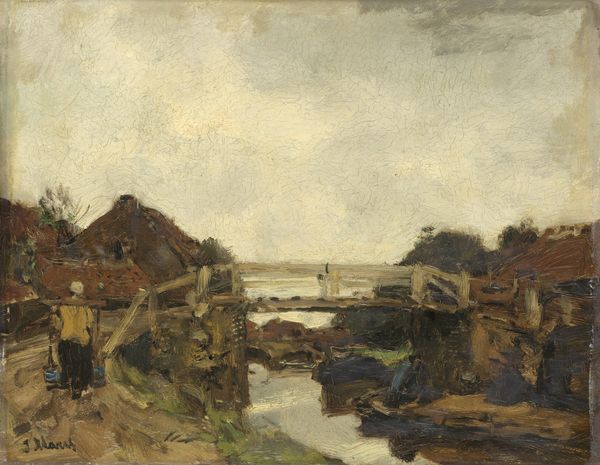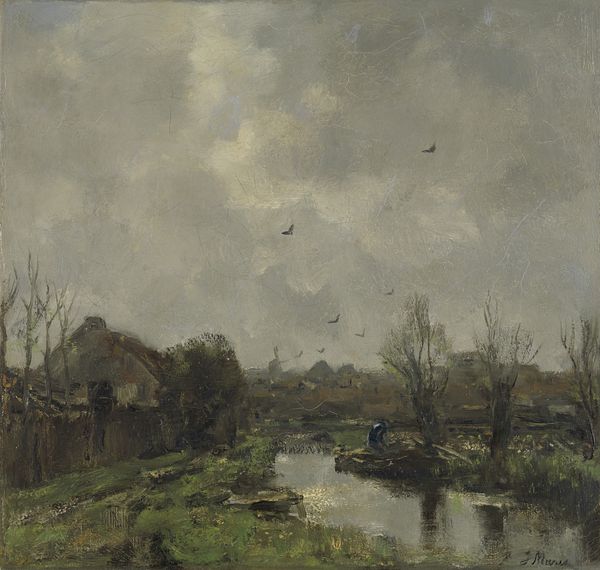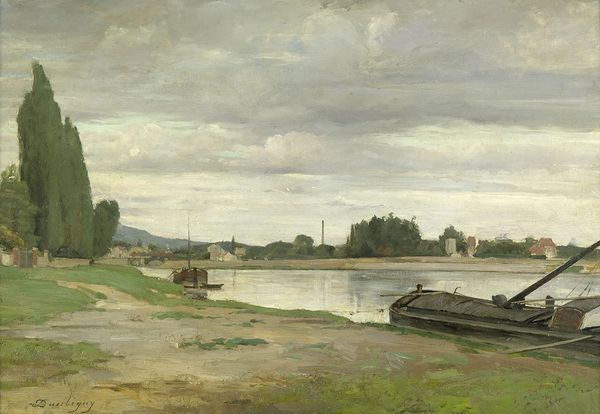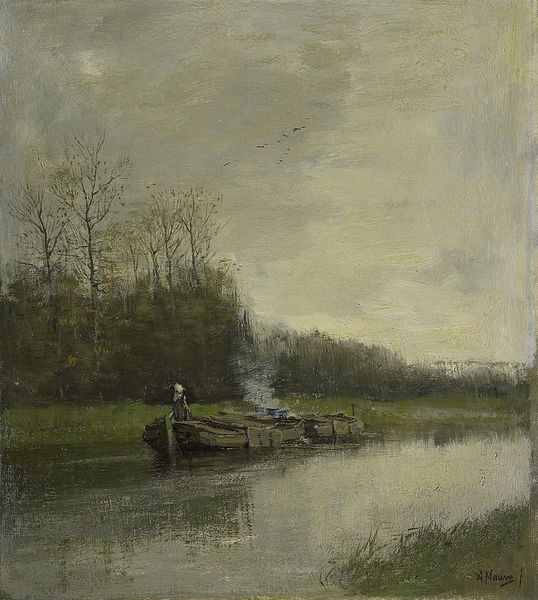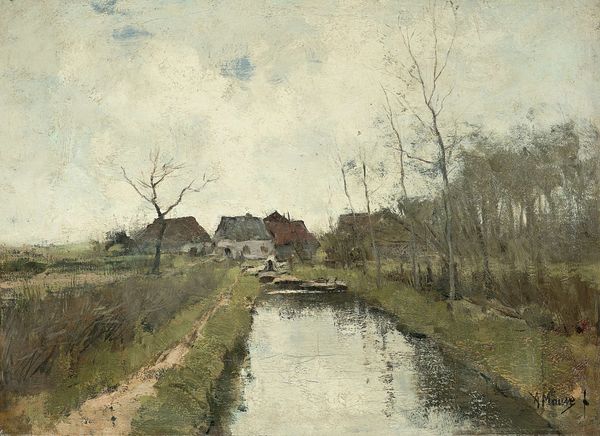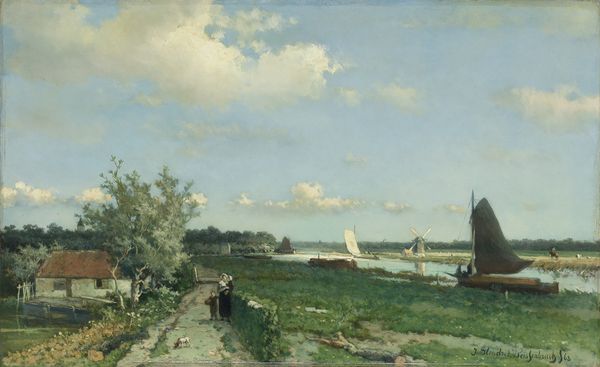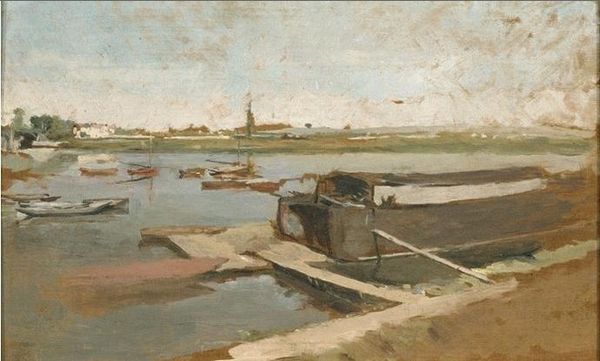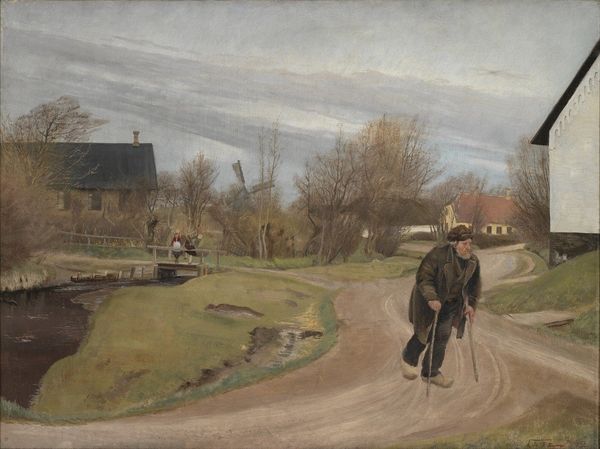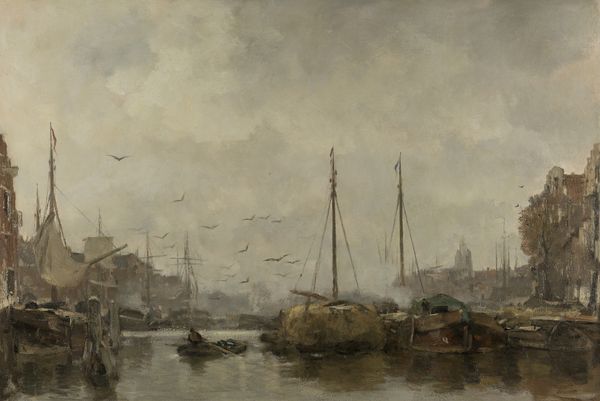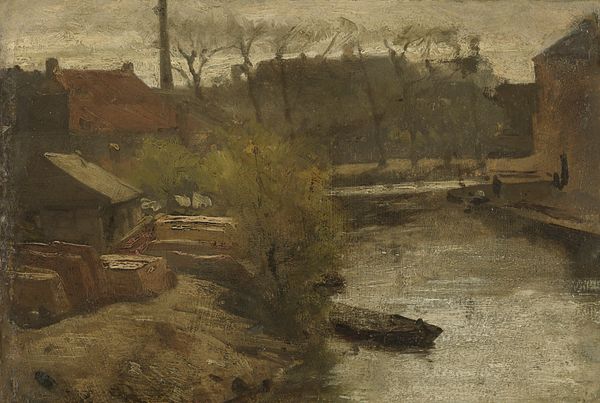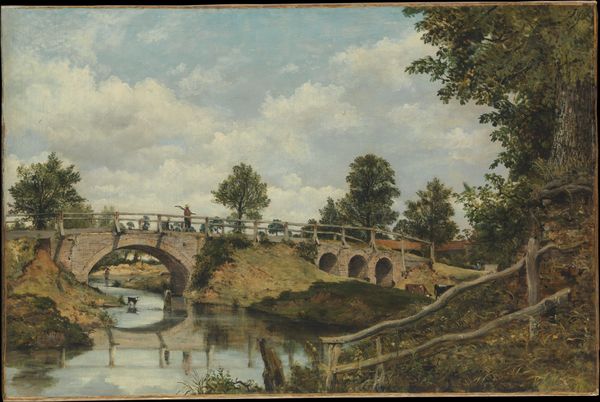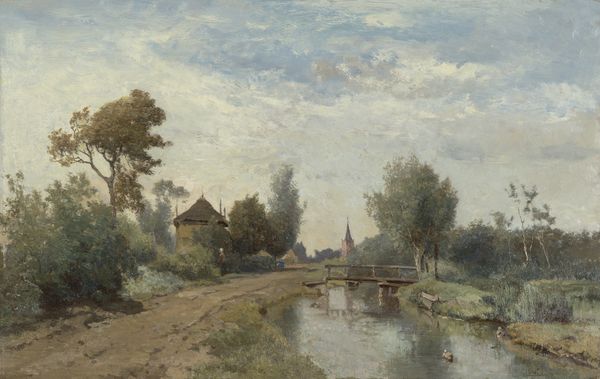
painting, oil-paint
#
dutch-golden-age
#
painting
#
impressionism
#
oil-paint
#
landscape
#
charcoal drawing
#
oil painting
#
cityscape
#
genre-painting
#
realism
Dimensions: height 42 cm, width 73.5 cm, depth 11 cm
Copyright: Rijks Museum: Open Domain
Curator: The overwhelming impression I get is of quiet labor, a kind of muted harmony in the everyday. Editor: It’s a wonderful example of Jacob Maris' work, likely dating from around 1879. This painting, titled "The Bridge", showcases a serene Dutch cityscape and currently resides in the Rijksmuseum. Maris, positioned as a prominent figure, reflects the Hague School's influence and its focus on intimate, realistic scenes. Curator: The muted color palette really speaks to me; a range of greys and browns and soft blues, mirroring a rather melancholic mood. It reminds me of conversations around precarity, even just in how physically demanding life was for so many. This woman, burdened by her task... Editor: Yes, there's an undeniable sense of the weight of labor represented. What is particularly significant here is the departure from idealization that was characteristic of earlier landscape painting. The Hague School sought to portray the lives of ordinary people, emphasizing the social realism and inherent dignity found in their daily existence. Curator: I am struck by the perspective as well, we are not on the bridge with these individuals. The composition is quite fascinating as it seems we, the audience, are positioned slightly below the scene looking up towards this almost bleak, everyday snapshot. It emphasizes that socio-economic distance between the viewer and the people depicted in the piece. Editor: Absolutely. Maris’ brushstrokes, heavily influenced by the rise of impressionism, capture a certain atmospheric perspective – almost blurring out detail to communicate emotion. It reflects not just the physical landscape but also a nuanced understanding of the societal atmosphere prevalent at the time. The placement of figures such as the woman carrying buckets, or the laborer steering a boat emphasizes themes of hard labor within the city’s context. The presence of a light post on top of the bridge almost ironically points towards new advances as compared to ancient lifestyles of labor, drawing out how societal growth has shaped life itself. Curator: Thinking about Maris' contemporaries and the cultural milieu in which he was creating, it’s fascinating to observe his attempt to highlight figures and themes of what at the time may have been otherwise forgotten; I now find this act increasingly more important. Editor: Indeed. Maris’ contribution allows for deeper dialogues surrounding labor representation within nineteenth-century Dutch painting. By critically evaluating the narratives woven within the painted imagery, we’re afforded perspectives regarding past lives whilst creating opportunities to reshape our perceptions on current artistic representations within institutions.
Comments
rijksmuseum about 2 years ago
⋮
Jacob Maris painted this bridge in The Hague, his city of residence. The farmer’s wife carrying two pails of milk with a yoke and the farmer in the sand barge attest to just how rural The Hague was at the time. A sketch of the same motif is also on display in this gallery. Maris captured the scene with powerful strokes. He made the sketch out of doors, and the worked-up painting in his studio.
Join the conversation
Join millions of artists and users on Artera today and experience the ultimate creative platform.
